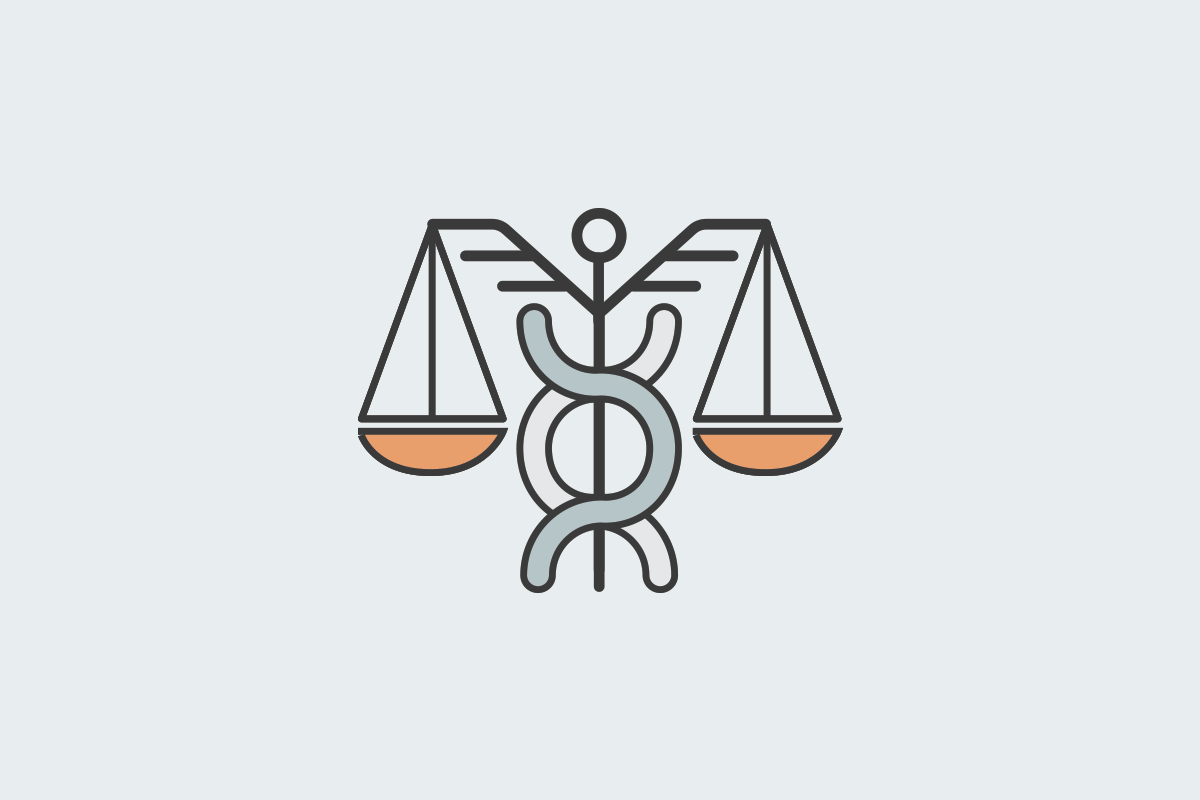During the COVID-19 pandemic, people spent a lot of time isolated and indoors, which helped foster an environment where some people now feel lonelier than ever. The result is a loss of social connectedness—the degree to which people feel the social connections and relationships in their lives to satisfy their wants and needs. When social…
Your Welcoa membership has expired.
Tying Wellness Incentives to Health Savings Accounts Legal Considerations
The following article does NOT constitute legal advice and should not be used as such. It is for educational purposes only. Readers should retain legal counsel to obtain definitive answers.
One question that frequently arises in my wellness law practice is whether and how employers can tie incentives to Health Savings Account (HSA) contributions. Given that tax season is upon us, and HSA’s are tax-favored accounts, I thought it would be appropriate to offer some background and legal considerations on this topic.
The Role of High Deductible Health Plans (HDHPs)
Many employers tackle the rising costs of health benefits by offering high deductible health plans (HDHPs). By offering HDHPs, employees can then enroll in an HSA. According to the Bureau of Labor Statistics:
HDHPs allow workers to establish Health Savings Accounts (HSA), which are employee-owned and used to pay for medical expenses with pretax contributions. Additionally, HSAs may earn tax-free interest and unused contributions roll over from year to year.1
Indeed, the popularity of HDHP offerings increased for all private industry workers from 14 percent in 2010 to 30 percent in 2019.2
When an employer offers an HDHP, it must be mindful of the other benefits it offers its employees, such as an onsite clinic or direct primary care benefits.3 This is because to be eligible for the HSA tax benefits, an individual may not be covered by any other health plan.4 If an individual has health coverage other than the HDHP, the individual is no longer eligible to contribute to an HSA.5 Employers that offer significant benefits in the nature of medical care through direct primary care or onsite clinics, for example, could jeopardize its employees’ HSA eligibility. The IRS has stated that benefits such as physicals and immunizations, allergy injections, distribution of over-the-counter pain relievers, or treatment of worksite accident injuries are not classified as “significant benefits” and therefore would not jeopardize HSA eligibility.6 Offering more comprehensive services, however, such as primary care or chiropractic care, could affect HSA eligibility.
The IRS has concluded that typical employee assistance, wellness, and disease management programs will not affect HSA eligibility.7 For example, the IRS states that typical services like education, fitness, sports and recreation activities, stress management, and health screenings are not “significant benefits in the nature of medical care or treatment” and therefore do not impact an employee’s HSA eligibility.8
Health Savings Account (HSA) Contributions
Another legal consideration is potential discrimination when an employer contributes to an HSA account as part of a wellness program. Simply put, employer contributions to employee HSAs cannot discriminate in terms of eligibility or contributions in favor of highly compensated or key employees.9
Which set of nondiscrimination rules apply to HSA contributions depends on whether the employer contribution is made through or outside a cafeteria plan. A “cafeteria plan” is also known as a “Section 125” plan (referencing the part of the Internal Revenue Code that governs those plans). Section 125 plans are written plans that offer employees a choice between receiving their compensation in cash or as part of an employee benefit. If taken as a benefit, employee contributions are made pre-tax and employer contributions toward the employee’s benefits are not taxed.10
An employer that chooses to make contributions to its employees’ HSAs outside a cafeteria plan, which typically is not advisable in the context of wellness program incentives, must comply with separate “comparable contribution” requirements in lieu of the cafeteria plan nondiscrimination rules.11 Thus, an employer HSA contribution that is set as a percentage of compensation may discriminate in favor of highly compensated individuals, because such individuals would earn a proportionately larger dollar reward.12
With regard to contributions within a cafeteria plan, according to 26 § 54.4980G-5:
Employer contributions to employees’ HSAs are made through a section 125 cafeteria plan and are subject to the section 125 cafeteria plan nondiscrimination rules and not the comparability rules if under the written cafeteria plan, the employees have the right to elect to receive cash or other taxable benefits in lieu of all or a portion of an HSA contribution (meaning that all or a portion of the HSA contributions are available as pre-tax salary reduction amounts), regardless of whether an employee actually elects to contribute any amount to the HSA by salary reduction.
To meet he cafeteria plan nondiscrimination rules, plans must pass the following three tests:
- Eligibility test: The plan may not discriminate in favor of highly compensated individuals as to eligibility to participate;
- Benefits and Contributions test: The plan may not discriminate in favor of highly compensated participants as to benefits and contributions;
- Key Employee Concentration test: The nontaxable benefits provided to key employees may not exceed 25% of the nontaxable benefits provided for all employees under the cafeteria plan.13
For purposes of the Eligibility Test and the Contributions and Benefits (C&B) Test, the prohibited group includes any participant who is—
- an officer;
- a shareholder owning more than 5% of the voting power or value of all classes of stock of the employer;
- highly compensated; or
- a spouse or dependent of an individual described above.
The Internal Revenue Code defines “Key Employee” as follows:
- an officer of the employer having an annual compensation greater than $130,000,
- a 5-percent owner of the employer, or
- a 1-percent owner of the employer having an annual compensation from the employer of more than $150,000.14
The cafeteria plan and other nondiscrimination requirements are complex and discussing those complexities is beyond the scope of this blog post. Nevertheless, wellness professionals should be aware that these nondiscrimination laws exist and should work with legal counsel when designing wellness incentives that impact HSA contributions. Working with legal counsel is especially important if the contributions are different among employees, particularly in terms of the award amount and who can earn the reward.
For all your workplace wellness incentive legal needs, contact the Center for Health and Wellness Law, LLC. We are here to help you navigate these choppy waters!
1 Bureau of Labor Statistics, Employee Benefits Survey, High Deductible Health Plans and Health Savings Accounts (Sept. 3, 2020), available at https://www.bls.gov/ncs/ebs/factsheet/high-deductible-health-plans-and-health-savings-accounts.htm (last visited Dec. 31, 2020).
2 Id.
3 Coverage for preventive care, accidents, disability, dental care, vision care, long-term care, telehealth and other remote care is excluded and can be offered by employers without jeopardizing HSA eligibility. See 26 U.S.C. § 223(c)(1)(B) (disregarded coverage) and § 223(c)(2)(C) (preventive care).
4 ISee IRS Notice 2008-59, Health Savings Accounts, Q&A-2, available at https://www.irs.gov/irb/2008-29_IRB#NOT-2008-59 (last visited Dec. 31, 2020).
5 Id. at Q3.
6 Id. at Q10.
7 IRS Notice 2004-50, Health Savings Accounts, Q&A -10 (Aug. 9, 2004), available at https://www.irs.gov/pub/irs-drop/n-04-50.pdf (last visited Dec. 31, 2020).
8 Id.
9 Thomson Reuters Checkpoint, EBIA Benefits Library, Consumer-Driven Health Care (2015): 2088.
10 See e.g., Understanding Section 125 Cafeteria Plans, SHRM (Oct. 11, 2019), available at https://www.shrm.org/ResourcesAndTools/tools-and-samples/toolkits/Pages/Understanding-Section-125-Cafeteria-Plans.aspx (last visited April 4, 2021).
11 Id at 209; see also IRC §§ 105(h), 125(b)(1), 4980G, 4980E; 26 CFR § 1.105-11(e); 26 C.F.R.
§ 1.125-7 (proposed); IRS Notice 2004-2, Q&A 32; IRS Notice 2004-50, Q&A 49. An excise tax equal to 35 percent of the total amount of employer HSA contributions applies to any employer that contributes to its employees’ HSAs outside of a cafeteria plan and fails to satisfy the comparability rules. Those rules require all HSA-eligible employees in the same non-collectively bargained category (i.e., current full-time, current part-time, or former employees), who have the same High Deductible Health Plan (HDHP) coverage tier (i.e., self-only, self-plus-one, self-plus-two, or self-plus-three-or-more), to receive HSA contributions in the same dollar amount or the same percentage of the deductible under their HSA-compatible high deductible health plan. Because wellness rewards are earned on the basis of whether a particular employee participates in or satisfies the wellness program activity, the resulting HSA contributions likely would not be comparable unless each employee in the same category happened to earn the same HSA incentive amount. 26 CFR §§ 54.4980G-4, Q/A – 9 and 54.4980G-5. Stated another way, if an employer wanted to offer wellness program awards in the form of HSA contributions outside a cafeteria plan, the employer would need to make the same contribution amount on behalf of all “comparable” employees, regardless of whether they participated in the wellness program (thus effectively negating the “incentive” aspect of the wellness program). Therefore, it is recommended that employers make any such wellness program incentive HSA contributions through a cafeteria plan established under IRC § 125.
12 Consumer-Driven Health Care at 209.
13 See e.g., Understanding Section 125 Cafeteria Plans, SHRM (Oct. 11, 2019), available at https://www.shrm.org/ResourcesAndTools/tools-and-samples/toolkits/Pages/Understanding-Section-125-Cafeteria-Plans.aspx (last visited April 4, 2021).
14 26 USC § 416. For purposes of clause (i), no more than 50 employees (or, if lesser, the greater of 3 or 10 percent of the employees) shall be treated as officers. In the case of plan years beginning after December 31, 2002, the $130,000 amount in clause (i) shall be adjusted at the same time and in the same manner as under section 415(d), except that the base period shall be the calendar quarter beginning July 1, 2001, and any increase under this sentence which is not a multiple of $5,000 shall be rounded to the next lower multiple of $5,000. Such term shall not include any officer or employee of an entity referred to in section 414(d) (relating to governmental plans). For purposes of determining the number of officers taken into account under clause (i), employees described in section 414(q)(5) shall be excluded. In 2020, the key income threshold for “key employees” was $180,000. See Cafeteria Plan Nondiscrimination Testing: Calculating Annual Compensation, Employee Benefits Corporation, available at https://www.ebcflex.com/cafeteriaplanndt2/ (last visited April 4, 2021).

Barbara J. Zabawa
President of the Center for Health and Wellness Law, LLC
wellnesslaw.com
Health Promotion Program Legal Updates*
Every 3rd Wednesday from 10:00–11:00 AM CT
*This is an exclusive WELCOA Member Resource.




